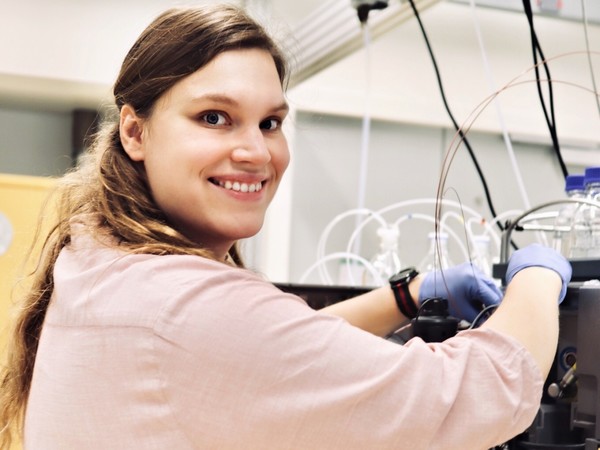Most plants live in symbiosis with soil fungi, which provide them with water and mineral nutrients. An international team with Czech participation examined the mechanisms by which plants control such a coexistence so that the fungus does not become a parasite instead of an ally. Scientists have found the genes involved in this process and discovered that they acted through plant hormones called strigolactones. An article with the results of this research has been published in the prestigious journal Nature Plants.
Arbuscular mycorrhiza is what occurs in many plant species. It is a symbiosis with some fungal species in which the fungal fibres penetrate the cells in the root. This co-existence is beneficial for the plant because the fungus supplies it with water and minerals that the roots would not otherwise reach. But there is price for the plant – in return, it provides the fungus with sugars and other organic nutrients. It must therefore keep its partner at bay, in other words, to check whether the fungal fibres do not grow more than necessary in the root. Otherwise, this coexistence would rather harm the plant.
A team of scientists from the USA, the Netherlands, and the Czech Republic decided to shed light on the molecular mechanisms by which the plant inhibits the development of mycorrhiza under certain conditions. In addition to regulatory proteins and genes, researchers have also focussed on plant hormones from the strigolactone family. These are secreted from the roots and stimulate the growth of mycorrhizal fungi.
“Our work has shown that strigolactones are important for the fine-tuning of relationships between the plant and the mycorrhizal fungi. They help ensure that the symbiosis is beneficial for both partners,” said Kristýna Floková, who is employed in the Olomouc’s Laboratory of Growth Regulators, which is a joint workplace of the Institute of Experimental Botany at the Czech Academy of Sciences and Palacký University. Concurrently, the laboratory is part of the Centre of the Region Haná for the Agricultural and Biotechnological Research. She conducted the strigolactone analyses in the research together with her Dutch colleague, Prof H.J. Bouwmeester, and his Plant Hormone Biology research group at the University of Amsterdam.
The research team chose as its main experimental plant Medicago truncatula, closely related to alfalfa. The researchers examined how the intensity of mycorrhiza changes depending on the phosphorus level or previous fungal root colonisation. By the use of molecular-biological methods and strigolactone analysis, they have been able to identify genes that respond to the investigated stimuli and, if necessary, suppress the development of mycorrhiza. They act by means of the strigolactones – they decrease their concentration in the roots, which suppresses the growth of fungal fibres.
“Strigolactones were first described as plant hormones only in 2008, and since then it has been gradually revealed what functions they affect in plants,” said the scientist who has been working with the University of Amsterdam for three years, while the Olomouc workplace provides her with top-notch facilities for chemical analysis. “In addition, strigolactones have the potential for practical use, for example in agriculture, to combat parasitic weeds that attack economically important crops and cause huge yield losses, particularly in Central Africa, Southern, and Eastern Europe,” added Floková.
